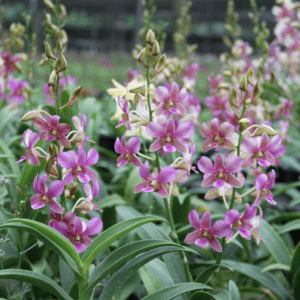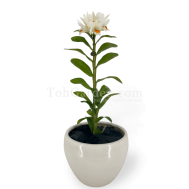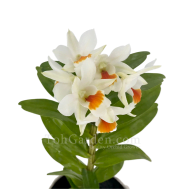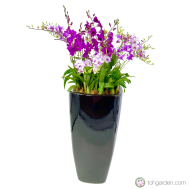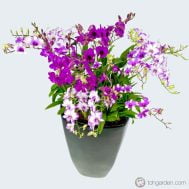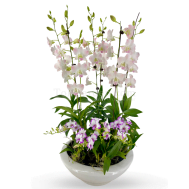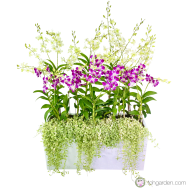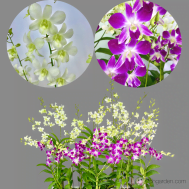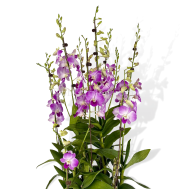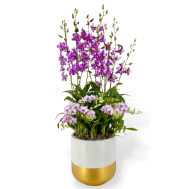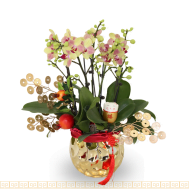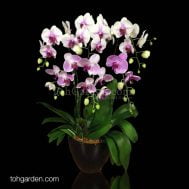The Dendrobium genus is one of the largest and most diverse groups within the Orchidaceae family, comprising over 1,800 species found across a wide geographical range from the Himalayan mountains to the islands of the South Pacific. Revered for their floral diversity, adaptability, and beauty, Dendrobium orchids have played a crucial role in horticulture and hybridization worldwide
Morphological and Growth Diversity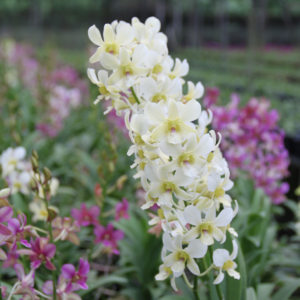
Dendrobiums are known for their tremendous variety in plant size, flower color, shape, and blooming season. Some have long, cane-like pseudobulbs, while others have compact, clumping forms. Flowers can last from a few days to several months depending on the species.
Because of this wide range, Dendrobium species have been grouped into sections, such as:
- Phalaenanthe – soft-caned, commonly used in tropical hybrids
- Nobile – deciduous and bloom from pseudobulbs during dormancy
- Spatulata – long-lasting flowers with twisted petals, suited for hot climates
🏡 How to Take Care of Dendrobium Orchids at Home
🌤️ 1. Light
-
Likes bright, indirect sunlight.
-
Best spots: near an east- or south-facing window (filtered light).
-
Avoid harsh midday sun—it can burn the leaves.
Tip: If leaves are dark green, it needs more light. If they’re yellowish-green, that’s perfect!
💧 2. Watering
-
Water when the potting mix is almost dry—usually once a week.
-
Use room temperature water, and let it drain completely.
-
Don’t let it sit in water or soggy media—Dendrobiums hate “wet feet.”
In cooler months or if it goes dormant, water less frequently.
🌡️ 3. Temperature & Humidity
-
Likes warm days (24–30°C / 75–85°F) and cool nights (15–20°C / 60–68°F).
-
Enjoys humidity (ideally 50–70%). Use a humidity tray, misting, or humidifier if air is dry.
🌱 4. Potting & Medium
-
Use a well-draining orchid mix (e.g., bark, perlite, charcoal).
-
Repot every 2–3 years or when the media starts breaking down.
Choose a pot with drainage holes. Clear orchid pots are great to monitor root health.
🧪 5. Fertilizer
-
Feed with a balanced orchid fertilizer every 2 weeks during active growth (spring/summer).
-
Use half-strength to avoid overfeeding.
-
Fertilize once a month during dormant periods (fall/winter).
✂️ 6. After Flowering
-
Do not cut off green canes—they store energy and may rebloom.
-
You can remove dead or shriveled canes with clean scissors.
-
Keep watering and feeding to support new growth.
✅ Quick Do’s and Don’ts
| ✅ Do | ❌ Don’t |
|---|---|
| Give bright, indirect light | Expose to direct midday sun |
| Use airy, well-draining media | Let roots sit in water |
| Let potting mix dry slightly between watering | Water on a fixed schedule blindly |
| Feed regularly during growth | Over-fertilize or fertilize dry roots |
| Provide good airflow | Keep in a closed, stuffy space |
-
Dendrobium Dawn Maree in White Ceramics
$45.00 $49.05 (Including GST) -
Dendrobium Mini in Tall Planter 15 in 1
$367.00 $400.03 (Including GST) -
Dendrobium Peach Garden Arrangement
$225.00 $245.25 (Including GST) -
Dendrobium Sonia and Shavin in White Trough Planter 8 in 1
$367.00 $400.03 (Including GST) -
Dendrobium Toh Glory Arrangement 5 in 1
$125.00 $136.25 (Including GST) -
Dendrobium Xiangyu Arrangement
$235.00 $256.15 (Including GST)

